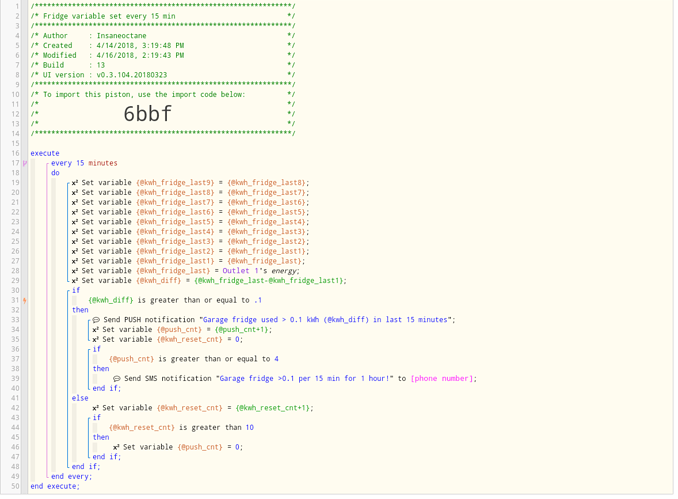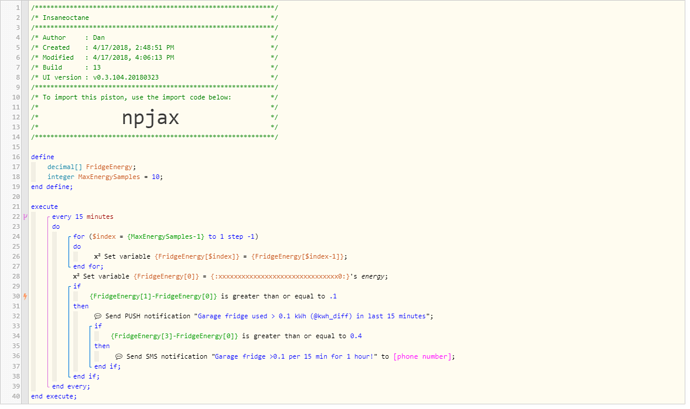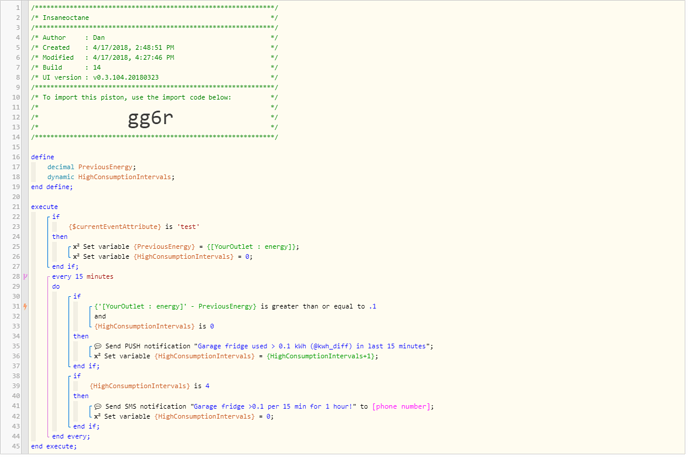1) Give a description of the problem
I’ve got a new device Zoon ZEN15 that reports energy usage. I’m using this DTH:
LINK
2) What is the expected behavior?
Either use the data directly from the DTH or calculate it in webCore. I’d like to pick an expected energy usage that is normal (ie 500Wh per hour) and alert me if the usage exceeds that threshold. Since the refrigerator duty cycles, I can’t just use a raw number. But, I can measure the typical usage per hour and if it’s exceeded by, say 10%, get an alert?
3) What is happening/not happening?
Newb
4) Post a Green Snapshot of the piston![]()
5) Attach any logs (From ST IDE and by turning logging level to Full)
REMOVE BELOW AFTER READING
I’m very new and literally just found webCore. I’ve used Core in the past, but looks like it’s time to move into the future! Thanks for any help!




